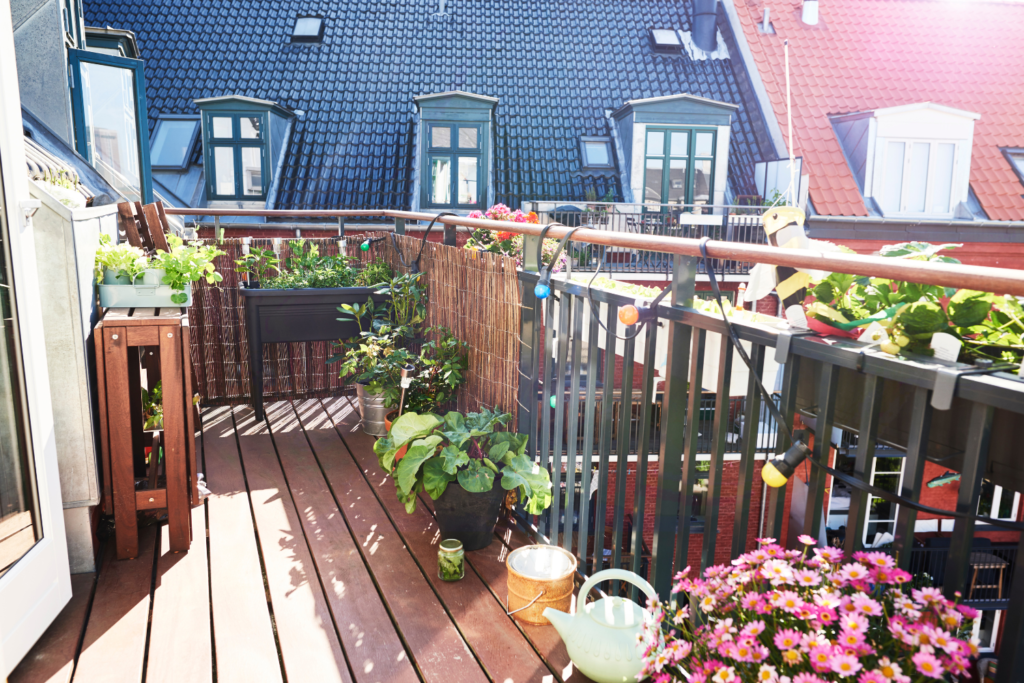
This post may contain affiliate links. As an Amazon affiliate, we earn from qualifying purchases. But we only recommend products we would use ourselves. View our Disclosure Policy here.
Urban living often means limited space, but it doesn’t have to limit your ability to grow your own fresh vegetables. With a bit of creativity, planning, and the right techniques, even apartment dwellers can enjoy the satisfaction of harvesting homegrown produce. Let’s explore how to transform your apartment patio into a thriving vegetable garden. We’ll cover the tools needed, starting from seedlings, utilizing small greenhouses, maximizing space efficiency, selecting easy-to-grow plants, and even incorporating a cozy seating area amidst your greenery.
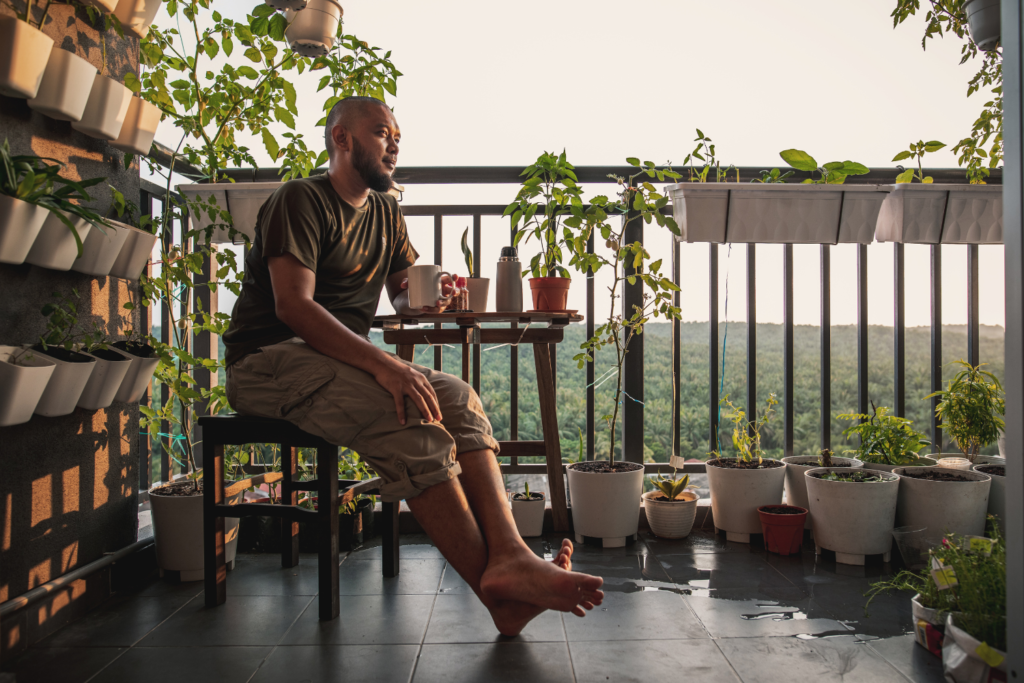
Surrounded by lush greenery on a patio, one can experience a profound sense of tranquility, as the soothing presence of plants fosters relaxation and rejuvenation.
Tools and Equipment
To garden effectively in a limited space, it’s essential to invest in tools that are compact, versatile, and efficient. Here’s a list of tools that won’t take up much space:
Hand Trowel and Fork: These are essential for planting, transplanting, and weeding in small spaces. A hand trowel is an indispensable tool for gardeners, facilitating precise planting and weeding tasks with ease and efficiency.
Pruning Shears: For maintaining the health and shape of your plants. Pruning shears are essential for maintaining garden health, enabling precise trimming of branches and foliage to promote growth and shape plants.
Watering Can or Hose with a Nozzle: Choose a watering method suitable for your space, ensuring efficient water delivery without waste. Watering plants is vital for their survival, providing essential hydration to maintain turgor pressure, support nutrient uptake, and sustain overall health and growth.
Compact Folding Garden Table: A small table can serve as a workspace for potting, transplanting, and organizing supplies. A small work table in gardening serves as a versatile surface for potting, organizing tools, and planning tasks, enhancing efficiency and comfort during various garden activities.
Vertical Garden Trellis: Utilize vertical space efficiently by growing plants upwards, saving precious floor space. Trellises maximize vertical space in vegetable gardens, allowing vining plants like tomatoes and beans to thrive while conserving valuable ground space.
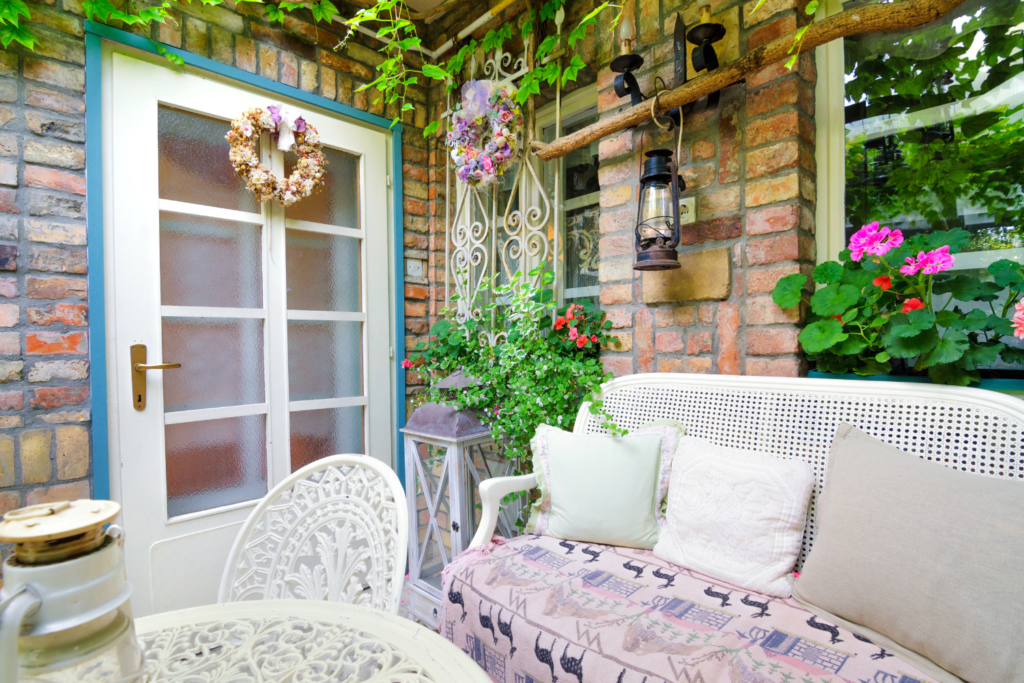
Starting Seedlings in Small Containers
Starting seeds in small containers is an excellent way to maximize space and control the growing environment. Here’s how to do it:
Select Suitable Containers: Use recycled containers like egg cartons, yogurt cups, or seedling trays to start your seeds. Ensure they have drainage holes at the bottom.
Fill with Seed Starting Mix: Use a lightweight, sterile seed starting mix to fill the containers. This medium provides the perfect environment for seed germination.
Plant Seeds: Follow the instructions on the seed packets for planting depth and spacing. Keep the soil consistently moist but not waterlogged.
Provide Adequate Light: Place the seedlings in a sunny spot or under grow lights to ensure they receive sufficient light for healthy growth.
Transplanting: Once the seedlings have developed a few sets of true leaves, they can be transplanted into larger containers or directly into the garden.
Utilizing Small Greenhouses
A small greenhouse can extend your growing season and provide a controlled environment for delicate plants. Here’s how to incorporate one into your apartment patio garden:
Chose a Portable Greenhouse: Opt for a small, lightweight greenhouse that can easily fit on your patio without taking up too much space. Using a tall greenhouse provides enough space to raise multiple vegetables while not sacrificing square footage.
Positioning: Place the greenhouse in a sunny spot where it will receive ample sunlight throughout the day. As long as the greenhouse is in direct sunlight for a few hours per day, it will provide the plants with the nutrition they need.
Temperature Regulation: Monitor the temperature inside the greenhouse and provide ventilation on hot days to prevent overheating. A small fan or automatic vent opener can help regulate temperature. A thermometer is a necessity to monitor the temperature throughout the day.
Watering and Humidity: Ensure plants inside the greenhouse receive adequate water and maintain humidity levels by misting or using a small humidifier. Track the humidity with a gauge and always have a watering can handy if outdoor faucets are not available.
Season Extension: Use the greenhouse to start seeds early in the spring or to protect tender plants from frost in the fall, effectively extending your growing season. If your patio has a roof, the season can be extended by using your greenhouse effectively.
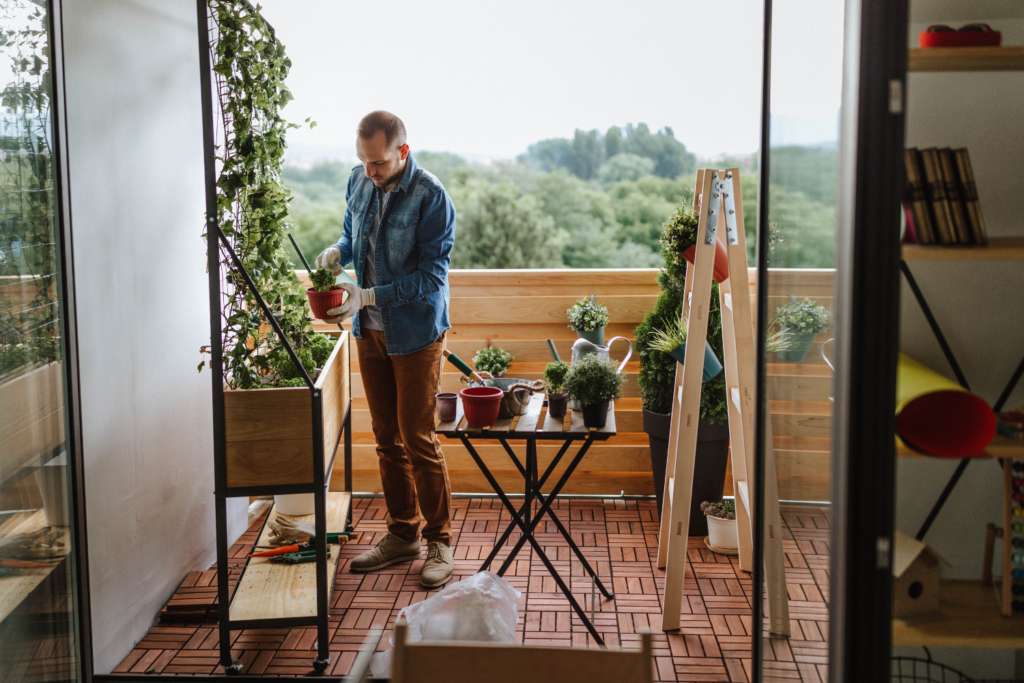
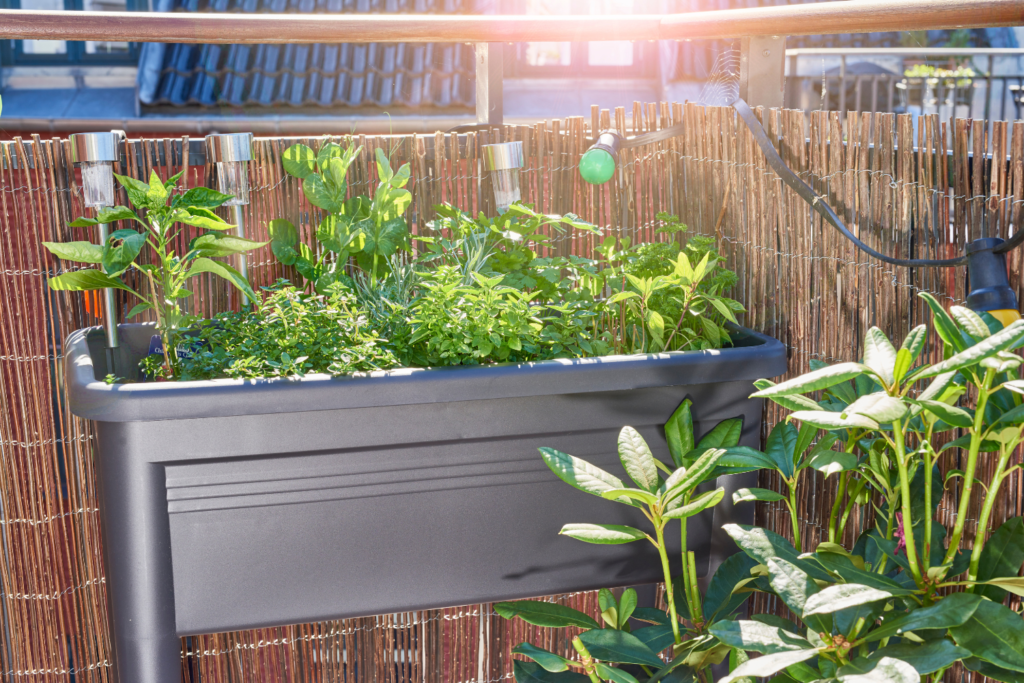
Layout for Maximum Square Footage
Maximizing space efficiency is crucial when gardening in a small area. Here are some tips for laying out your patio garden:
Vertical Gardening: Utilize vertical space by installing shelves, trellises, or hanging planters to grow vining crops like tomatoes, cucumbers, and beans.
Container Gardening: Use containers of varying sizes and shapes to make the most of your patio’s surface area. Group pots together to create visually appealing arrangements while maximizing space.
Raised Beds or Planters: If space allows, consider installing raised beds or elevated planters to create a defined growing area without taking up valuable floor space.
Pathways and Access: Leave enough space between containers or beds for easy access and maintenance. Consider using stepping stones or a small pathway to navigate the garden without compacting the soil.
Utilize Corners and Edges: Don’t overlook corners and edges—these areas can be perfect spots for compact plants or small trellises, maximizing growing space without cluttering the central area.
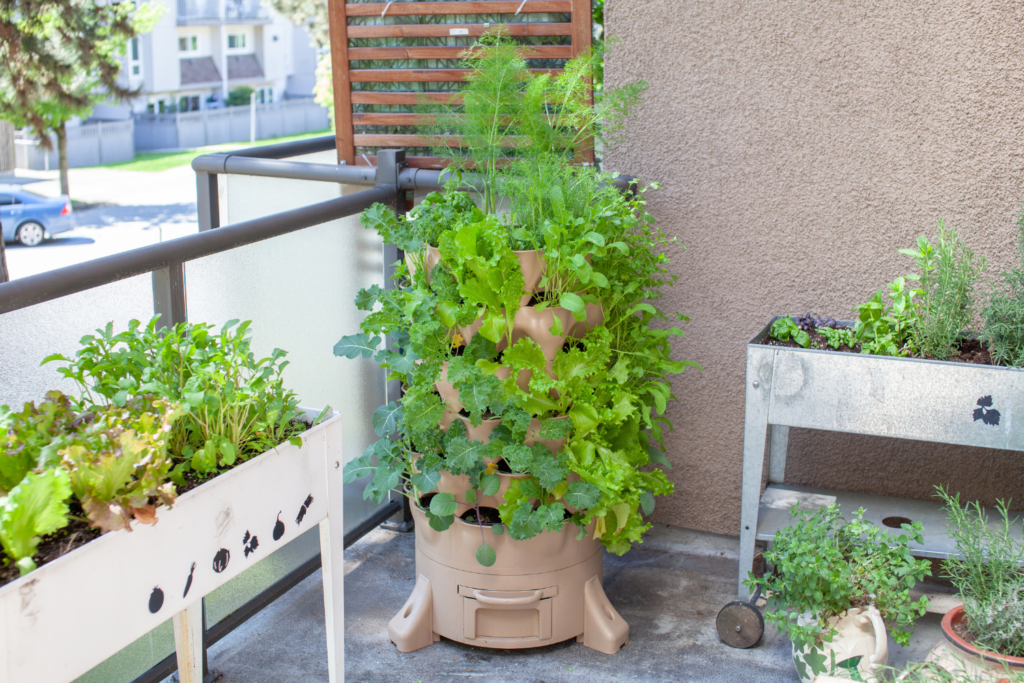
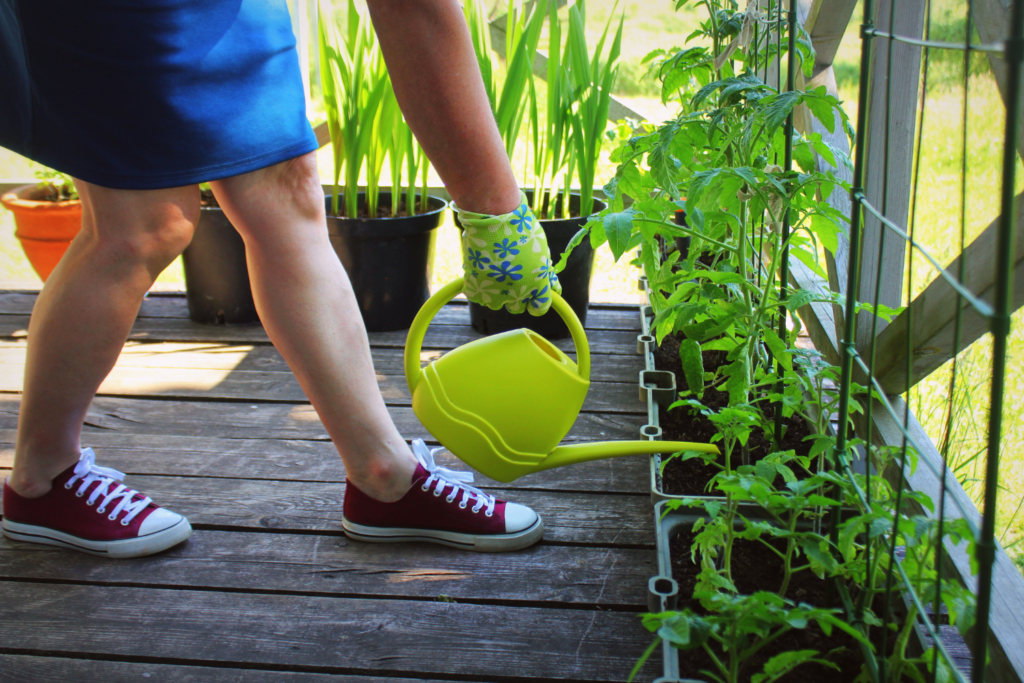
Best Easy-Growing Plants for Small Spaces
When space is limited, it’s essential to choose plants that are productive and well-suited to container gardening. Here are some easy-growing vegetables and herbs ideal for small spaces:
Salad Greens: Lettuce, spinach, arugula, and kale are fast-growing and well-suited to container gardening. Harvest leaves as needed for fresh salads.
Herbs: Basil, parsley, chives, and mint thrive in containers and can be harvested regularly for use in cooking or drinks.
Cherry Tomatoes: Compact varieties of cherry tomatoes, such as Tiny Tim or Tumbling Tom, are perfect for small spaces and produce an abundance of fruit throughout the season.
Peppers: Dwarf pepper varieties, like Patio or Lunchbox, are well-suited to container gardening and produce an abundance of sweet or spicy peppers.
Radishes and Carrots: These root vegetables grow well in containers and have a relatively short growing season, making them perfect for small-space gardening.
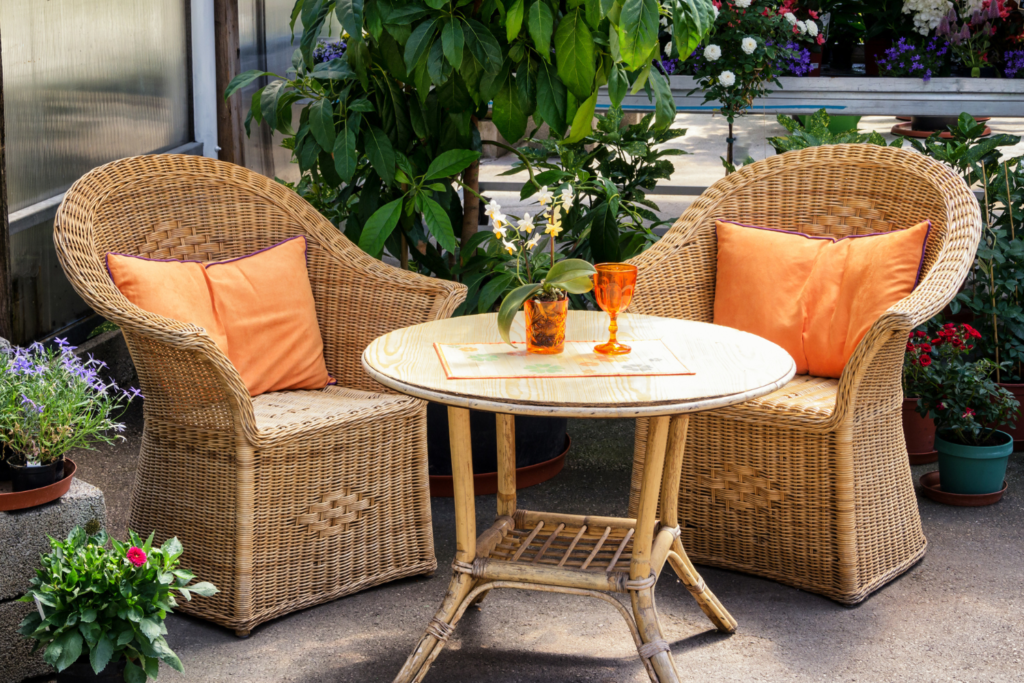
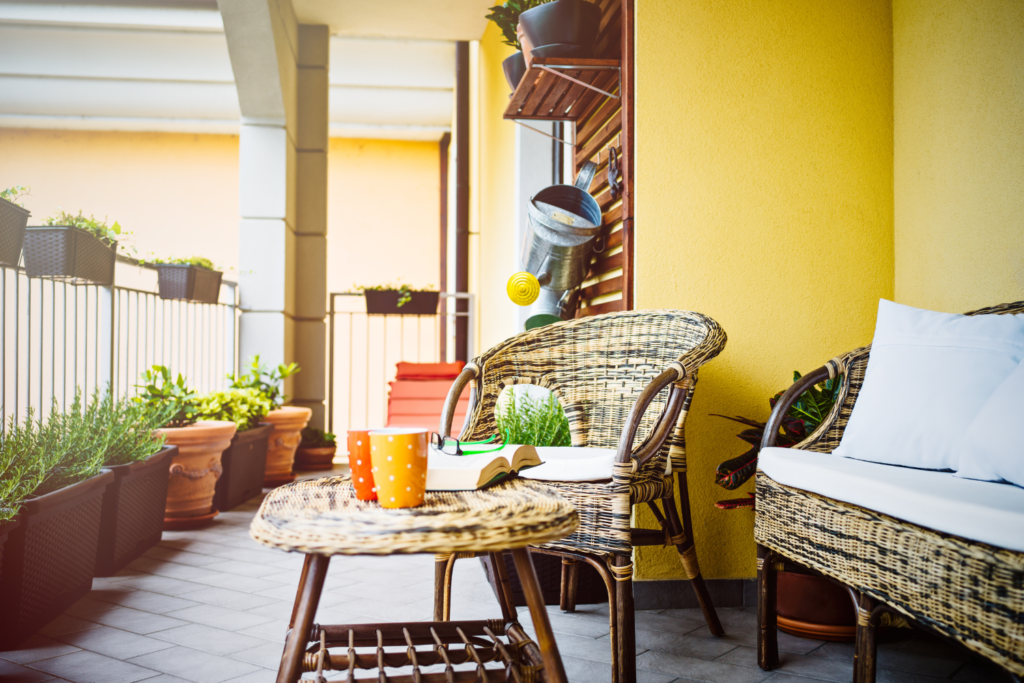
Incorporating a Seating Area
Even in a small garden, it’s essential to create a space where you can relax and enjoy your surroundings. Here’s how to fit in a seating area next to your vegetable garden:
Choose Space-Saving Furniture: Opt for compact furniture, such as folding chairs or a bistro set, that can be easily stored when not in use.
Vertical Seating: Consider installing a wall-mounted bench or seating along a railing to save floor space while still providing seating options.
Integrate Seating with Planters: Use built-in planters or raised beds as seating edges, providing a functional and aesthetically pleasing seating area within the garden space.
Add Comfort and Ambiance: Enhance your seating area with cushions, outdoor pillows, and potted plants to create a cozy atmosphere where you can relax and enjoy your garden.
Multi-Functional Design: Choose furniture pieces that can serve multiple purposes, such as storage benches or tables with built-in planters, to maximize the functionality of your small patio space.
Creating a vegetable garden on your apartment patio may seem challenging at first, but with careful planning and the right techniques, it’s entirely achievable. By utilizing space-saving tools, starting seedlings in small containers, incorporating small greenhouses, maximizing square footage, selecting easy-growing plants, and integrating a seating area, you can transform your patio into a flourishing oasis of fresh produce and relaxation. With dedication and creativity, anyone can enjoy the rewards of apartment gardening, no matter how limited the space may be.
